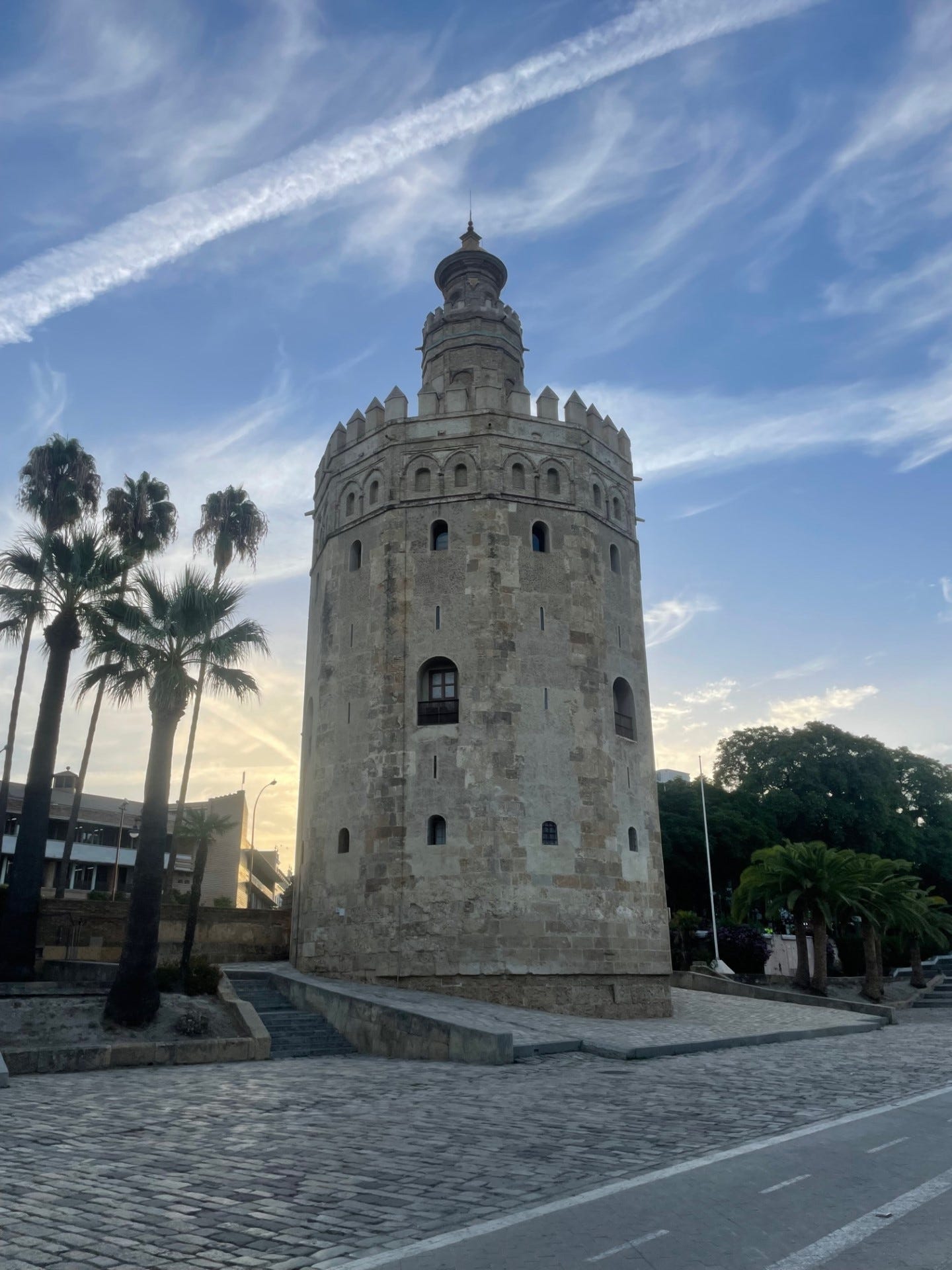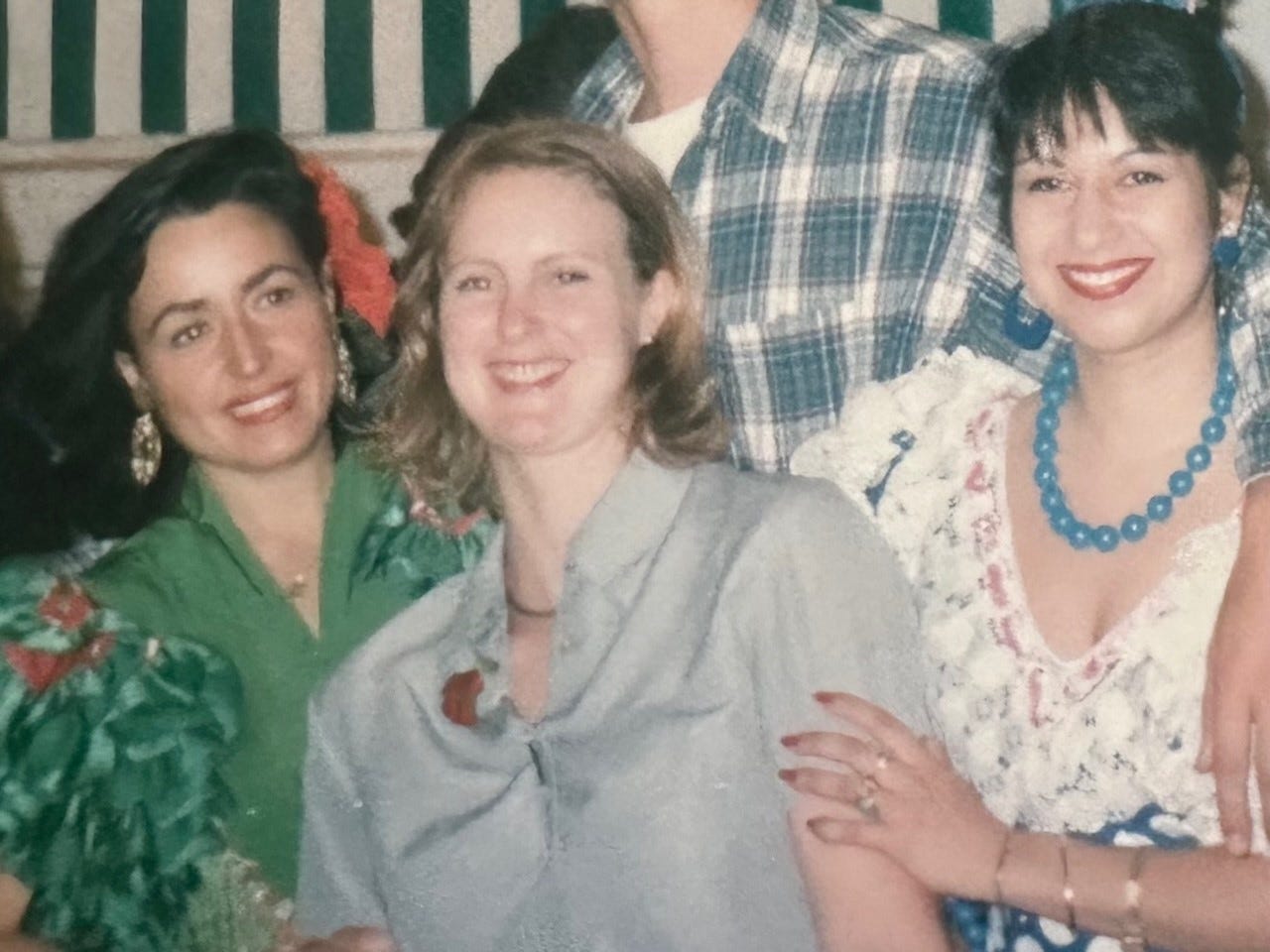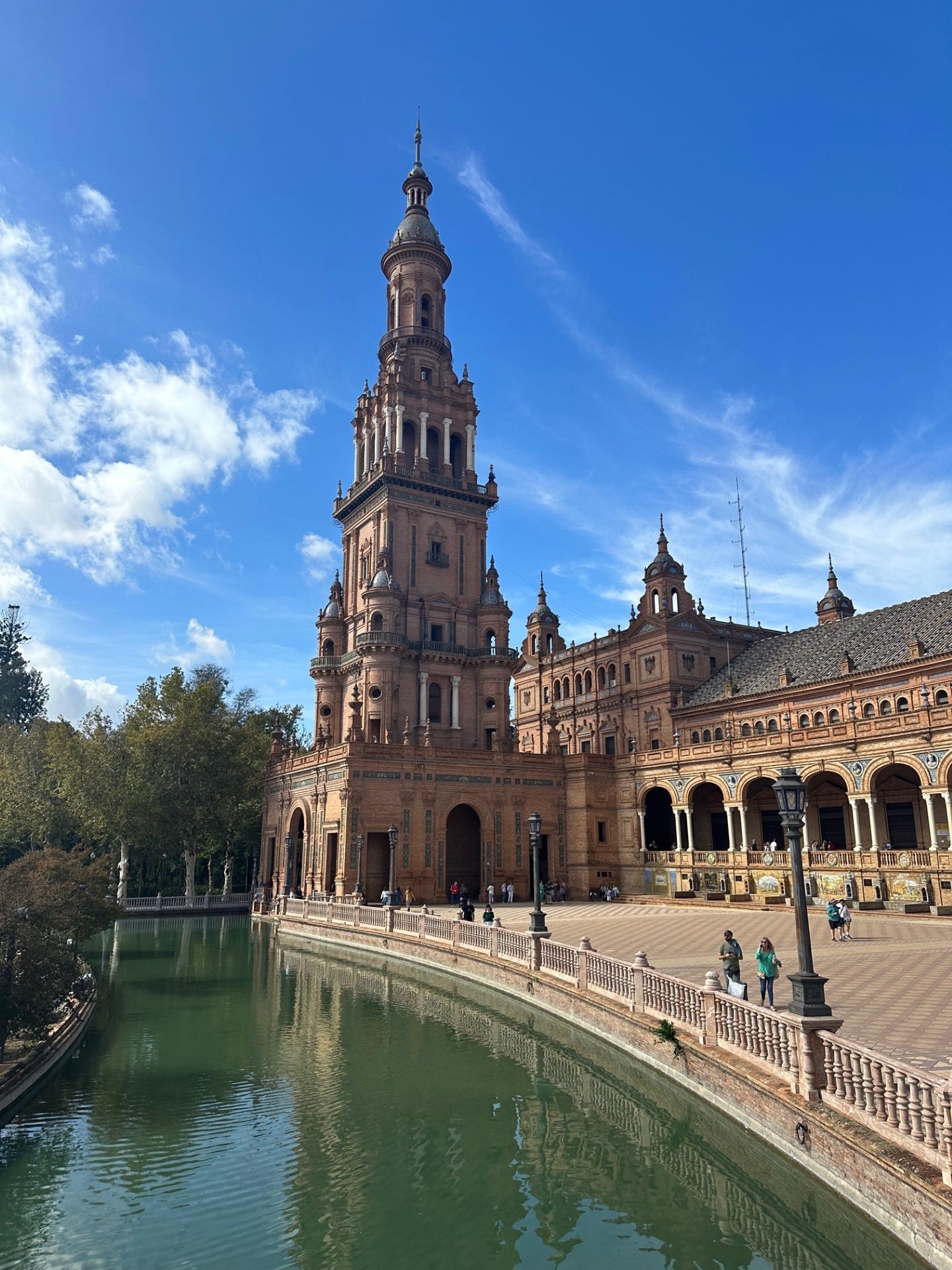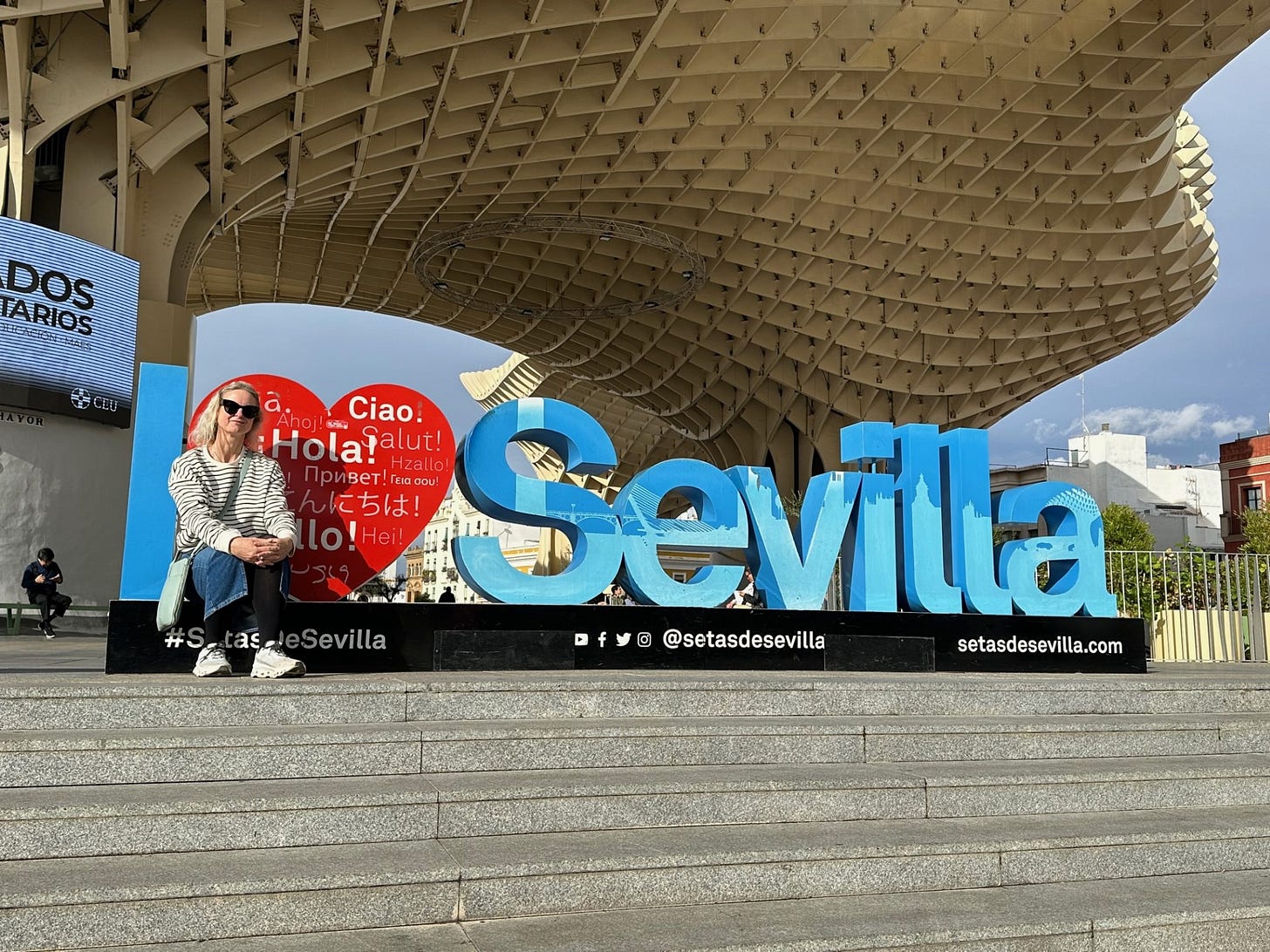Fiesta together, forever
Lebby Eyres reminisces about her experience at the Feria de Abril in Seville and reveals how you don’t have to be a local to have fun
When I look back at the two years I spent living in Sevilla in the mid-nineties, what amazes me most is how naïve I was when we arrived.
My then-boyfriend, Dylan, and I had spent a month in Madrid learning how to teach English as a Foreign Language. But it was September, by which time most teaching jobs are already filled, and our fellow students followed the path of least resistance and stayed in Spain’s capital to find work. We were drawn by the appeal of Andalucía, the flamenco and the fiesta.
We bizarrely decided the only way to get to Sevilla was on the expensive high-speed trian, the AVE, and took the cheapest 6am departure (after staying up all night partying with our new-found friends). Three hours later, the heat of a city still sweltering in late-summer sun overwhelmed our hungover bodies: we sweated out the day in the first hostel we could find.
I say naïve because we had nowhere to stay while we looked for work, no job to go to, nowhere to live and could not speak the language. I remember sitting in Plaza Nueva a few days later thinking we would have to face the humiliation of going home.
But fate – and the EU – was a wonderful thing. One night, shamefully eating in McDonalds, I picked up a paper and found a job advert for an English teacher at a small Spanish-run school in the suburbs. Someone else directed us to Flaherty’s Irish Bar, opposite the Cathedral, where we met Jeff and Ellen, who would become firm friends, and found Dylan a job at the school Jeff taught at.
A week later, our problems were solved (bar the language issue). We found a tiny studio in the corner of a beautiful and historic building. Not much natural light, but a large patio to look out on and a ginger kitten called Chico, who lived next door and loved us.
Then – incredibly – the rain came. It rained, and rained, and rained. For months. The drought was over, fresh water finally ran in the taps and even a parched Parque de Maria Luisa started to perk up. It was a relief to residents who’d been in the grips of the drought for four years.
And so it was that the whole city was looking forward with more than usual enthusiasm for that marker of spring, the Feria de Abril. Our minds had already been blown by Semana Santa: the processions of pointy hats (don’t ever mention the KKK); the astonishing “pasos” – huge floats featuring scenes from the Bible, carried on the backs of a uniquely tough and stocky race of men; and the piercing saetas, sung from balconies, hushing crowds into silence, accompanied by showers of rose petals and whiff of incense.
It’s a truly Catholic way to live one’s life. First, the penance (some people in the processions go barefoot, or march with two crosses on their shoulder for extra repentance), and then the party! Months of it too, because after Sevilla there are endless weekends of Ferias in other towns (you realise when you live here, that all Sevillanos will actually claim to have their roots in a small village -“mi pueblo” - outside the city).
Feria begins on Saturday evening – this year it’s my birthday, how I wish I was there – with the sábado de pescaíto and the switch on of the thousands of brightly coloured lanterns around the Feria site, a series of streets in the barrio de Los Remedios. Naturally, each street is named after a bullfighter and lined with mainly private casetas, small tents with a bar area, kitchen, tables and a dance floor, sponsored by different families.
Reading the latest guide to the event, I laughed at the line where it says it’s best to go with someone from Seville. As if it is that easy to pick up a passing Sevillano and get into the inner sanctum. However, they’re not wrong, because the best (but not the only) way to live the Feria to the full is to be invited.
In the first year, my student Fede took Dylan and me around from caseta to caseta. Everyone knows everyone, and back then, no money changed hands. Each family made us feel welcome, furnishing us with endless plates of fried fish and padrón peppers, tolerating our terrible clothes and (by then) moderate Spanish.
You have to like sherry, because there’s a lot of it: fino, manzanilla, or either one mixed with 7up (a “rebujito”). A Spanish version of Pimms, because drinking it might ensure you’re still standing at 3am. Sherry hangovers are hard to handle and it’s one way to lessen the impact.
You’re supposed to go home after the daytime stint, freshen up, and then return for the wilder, more unhinged evening sessions. We never did: just pushed on through, getting drunker and drunker, filling up the early evening time with a visit to the funfair. In the second year we went with my friend Myriam, a true Sevillana who was my height and lent me a dress for some proper cultural appropriation.
By then we were more fluent in everything, in the language, customs and even the fiendishly complicated four-part dance of courtship and conquest, the Sevillana. It astonished me then how there was no need for music: a group of Spaniards could just clap out the rhythm with their hands. I couldn’t master that, or the gracious shapes women make with their fingers as the dance heats up.
We drank with Myriam and her friends all night, stumbling back to our flat at dawn, after chocolate and churros on the bridge to Triana. There was possibly a romantic liaison between her and one of our visiting friends, and then we said goodbye and ran away to Conil to recover. I vomited down the side of the car – yes, someone drove, I’m afraid to say. We’d done a couple of days of Feria, maybe three, and were destroyed. The Andalucians do the whole week. It’s in the blood.
So can you really enjoy the Feria, without knowing a Sevillano? Of course. Who could not be overwhelmed by the beauty and passion of this festival, the horse riders in their bolero jackets, the fabulous dresses and big jewellery, the pride the inhabitants have for their city, which to them is the best place on earth? And quite possibly is. Yes, you may feel like you are gawping as you try to peek into the private tents but no one will care.
There are some open casetas where you are welcome to eat and drink – most of my Spanish friends were from other parts of the country, and so we all partied together in some of these. You will be still be made to feel welcome, especially if you dress up, and as long as you accept your role as the gawky “guiri” [that’s Spanish for uncouth foreign tourist - sounds about right - Lucy] , who knows what might happen…1
I feel sad writing this for all those friends who I haven’t seen for a while. I hope that Myriam, Maria José, Jo and Rafa and Fede are getting ready to party once more. Perhaps next year I’ll join them again.












